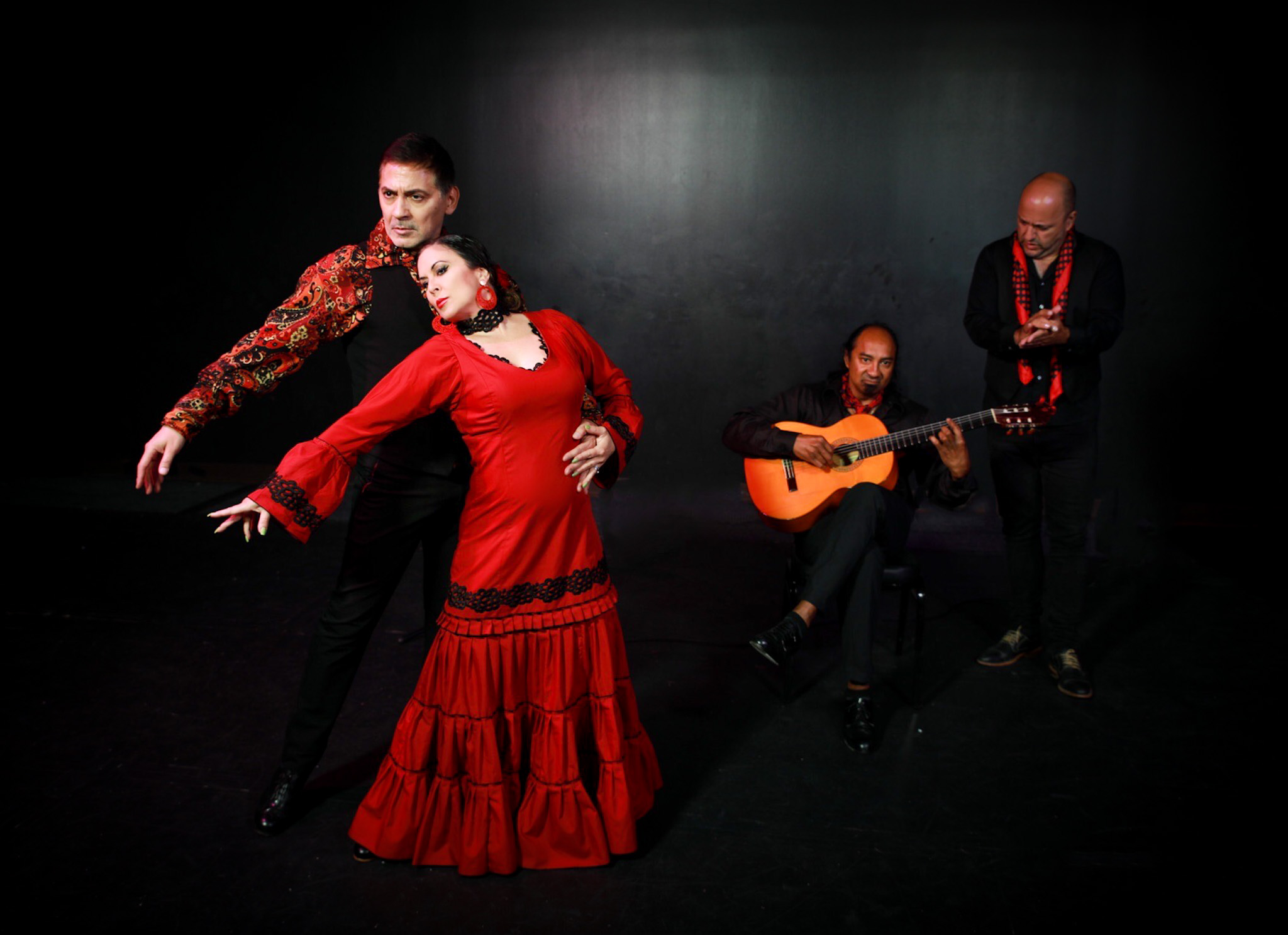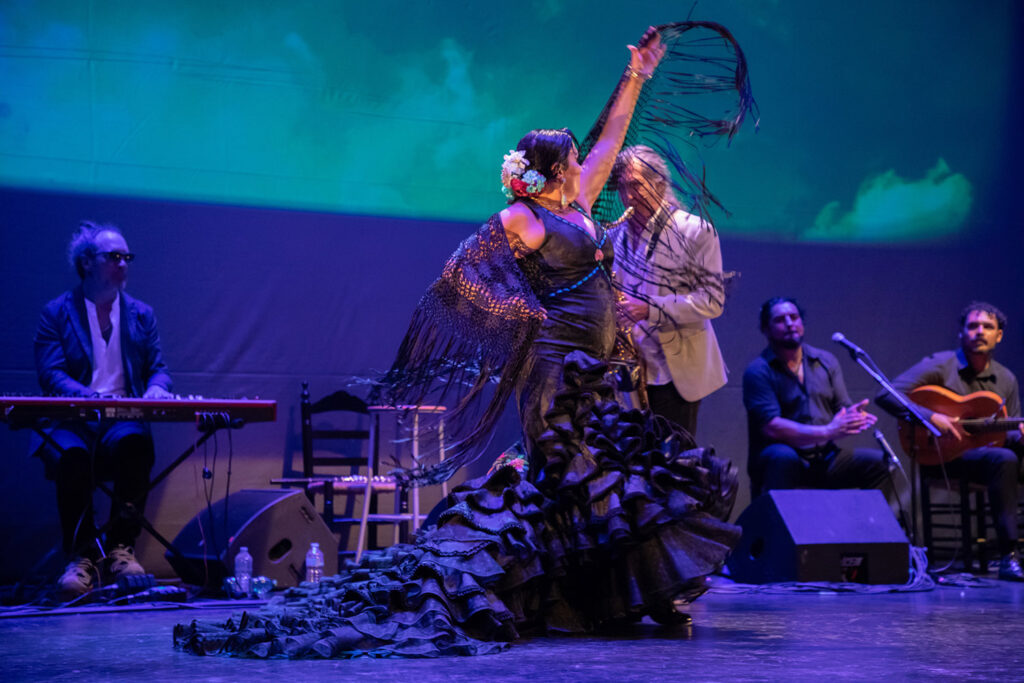Interview by Jennie Trejo. Photos provided by Flamenco Fever.
Did you know that Dallas is home to a world-class Flamenco dance company? Flamenco Fever, led by Artistic and Executive Director Julia Alcantára, has been at the forefront of bringing this vibrant art form to the community. We had the chance to catch up with Julia to discuss the nonprofit’s exciting milestones, including the opening of their new 4,600-square-foot brick-and-mortar location, La Cantera Arts Conservatory in Oak Cliff.

This year, the Texas Flamenco Festival, formerly known as the Oak Cliff Flamenco Festival, is set during Hispanic Heritage Month. It runs Oct. 7 through Oct. 20, with performances and workshops by legendary flamenco artists like El Carpeta, directly from Sevilla, Spain. Flamenco Fever, the only American company to be invited to perform in Spain, is dedicated to making flamenco accessible to all by offering free classes in dance, singing, and instruments, as well as hosting almost 100 shows a year.
Julia and her team are working to break down the barriers traditionally associated with flamenco, which is often confined to expensive theater venues. Their mission is to ensure that this powerful and expressive art form—rooted in the struggles of the oppressed—can be enjoyed by everyone in Dallas. As Julia puts it, Flamenco Fever wants to bring the art out of the theater and into the streets, allowing the healing and cathartic properties of flamenco to reach the people who need it most.
I would say that I started as a student. We have to study for decades to master this intricate art form. My journey into flamenco is a great story, but in the interest of time, I’ll just mention that I saw a film by Carlos Saura, a prominent producer of flamenco cinema. The movie was called El Amor Brujo, and it instantly changed my life. After seeing that film, I became obsessed with flamenco. I started my flamenco journey here in Dallas in the early ’90s, then moved to New York, and later to New Mexico, where I graduated from the National Institute of Flamenco. This journey spanned over a 10-year period. I’ve followed flamenco around the world. We’re the first American flamenco company to ever be invited to perform at an international festival in Malaga, Spain. We did that last year.

One of the things about flamenco that I was drawn to is that each dance has a meaning and a purpose. Flamenco is a cathartic and meditative art form that has healing properties. The dance originated from the exiled peoples during the Spanish Inquisition, over 500 years ago, who used flamenco music and dance to heal their hearts during a time of great sorrow. The purpose of flamenco is to express deep emotions, especially those that people often feel they cannot express. I believe that, particularly for men, there is a societal pressure not to feel certain emotions. However, when dealing with the death of a loved one or similar experiences, flamenco embodies those profound feelings. It gives people permission or inspires them to delve into their deep, heavy emotions, allowing them to process these feelings, whether as viewers or as participants—dancers, singers, guitarists, or whatever role they take on.

As a performing arts company, one of our biggest budget items is theater space. There simply isn’t enough space in Dallas for all the performing arts companies and individuals trying to do meaningful work in the city. We are thrilled to have a space specifically designed for what we do. For example, in many ballroom studios, the limitations on wearing Flamenco shoes can be restrictive– they often prohibit them due to concerns about damaging their floors. In contrast, our new space is shoe-friendly and built for our needs. Additionally, we intend for it to be open to the entire community. We’re already reaching out to yoga instructors, salsa and tango teachers, and we aim to offer meditation and other classes. We want this space to be a center for music and dance therapy.
This vision extends beyond flamenco; our goal is to create a community center that is open to other organizations and art forms. There is a dire need for this in Oak Cliff. This area truly needs a space that delivers the healing properties of the arts– not just Flamenco, but all forms of artistic expression. We aim to foster community, camaraderie, and healthy habits, providing people with engaging activities. In a world where many are absorbed in their phones and not communicating, we want to build a healthy, welcoming environment where people can make friends, connect, and be part of something larger.
We hope to foster more community involvement with our brick-and-mortar location. We believe this will inspire greater support for our festival this year, where we are bringing in some of Spain’s most famous artists. They embody the raw power of gypsy-style dancing, which traces its roots to the exiled peoples of the Spanish Inquisition, including the Gypsies, Jews, and Moors. Flamenco is attributed to the Gypsies of southern Spain as the creators of this art form. The family we are hosting is like a flamenco dynasty; over generations, they have developed a distinctive style that influences artists worldwide. Their interpretations of the dance and rhythms are at the highest level, resulting in truly explosive performances.
As we open our Arts Conservatory, we are also looking for new board members, stakeholders, and volunteers. So that’s another way to get involved!

Our main goal is to get people to come and experience flamenco. We put so much work into what we do, and we’re excited about it. We try to make our performances affordable and accessible to people of all demographics. Flamenco is generally quite expensive and rare to produce—you usually only see it in theaters where tickets are around $75. So we’re working hard to make flamenco more accessible to everyone.
The National Institute of Flamenco is based in Albuquerque, where I studied at the University of New Mexico. They host the largest flamenco festival in the world outside of Spain. It brings in 30 to 50 artists every year and draws thousands of attendees, generating millions of dollars in revenue for the city. We’d love to grow to that level because Dallas-Fort Worth deserves something that amazing in this metroplex.
The DFW area is around 40 percent Hispanic, and it’s a perfect place for flamenco to thrive. Traditionally, flamenco audiences have been middle-aged, upper-middle-class people in theaters. But we want to take it out of the theaters and onto the streets, making it more accessible to everyone. Flamenco has incredible healing and cathartic properties, and we want to share that with people who would truly benefit from it.
Sign up with your email address to receive good stories, events, and volunteer opportunities in your inbox.